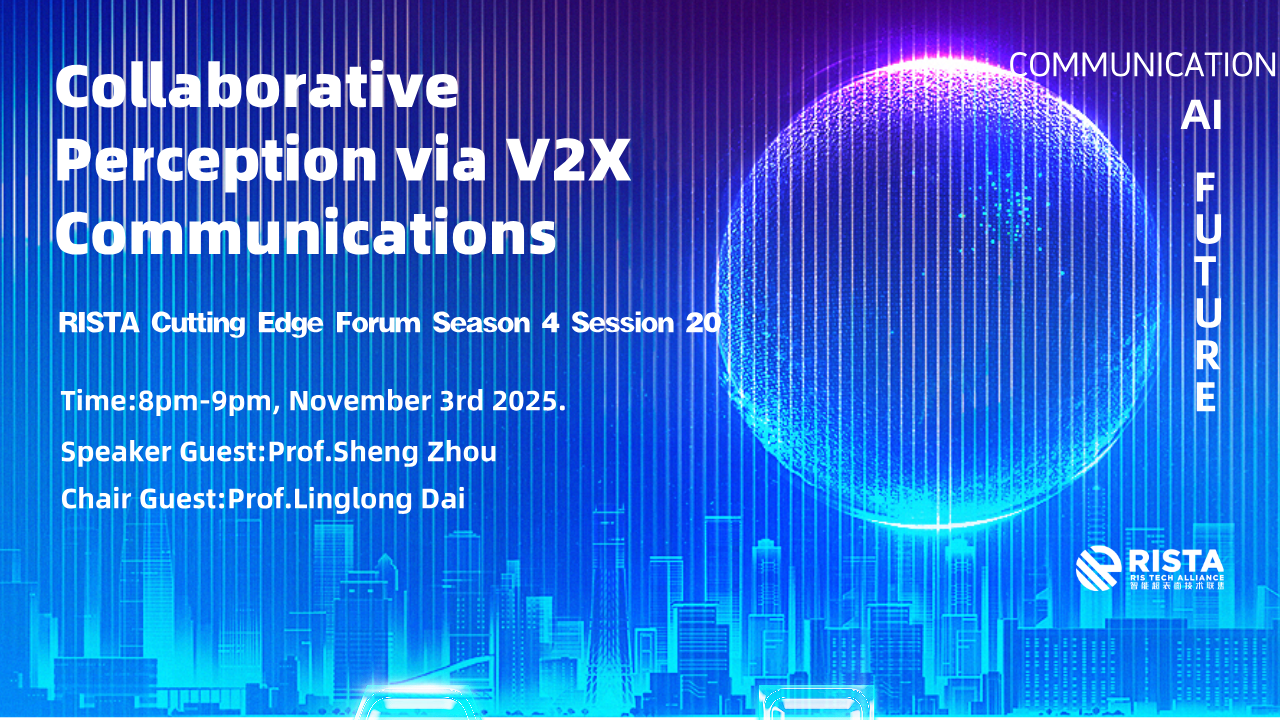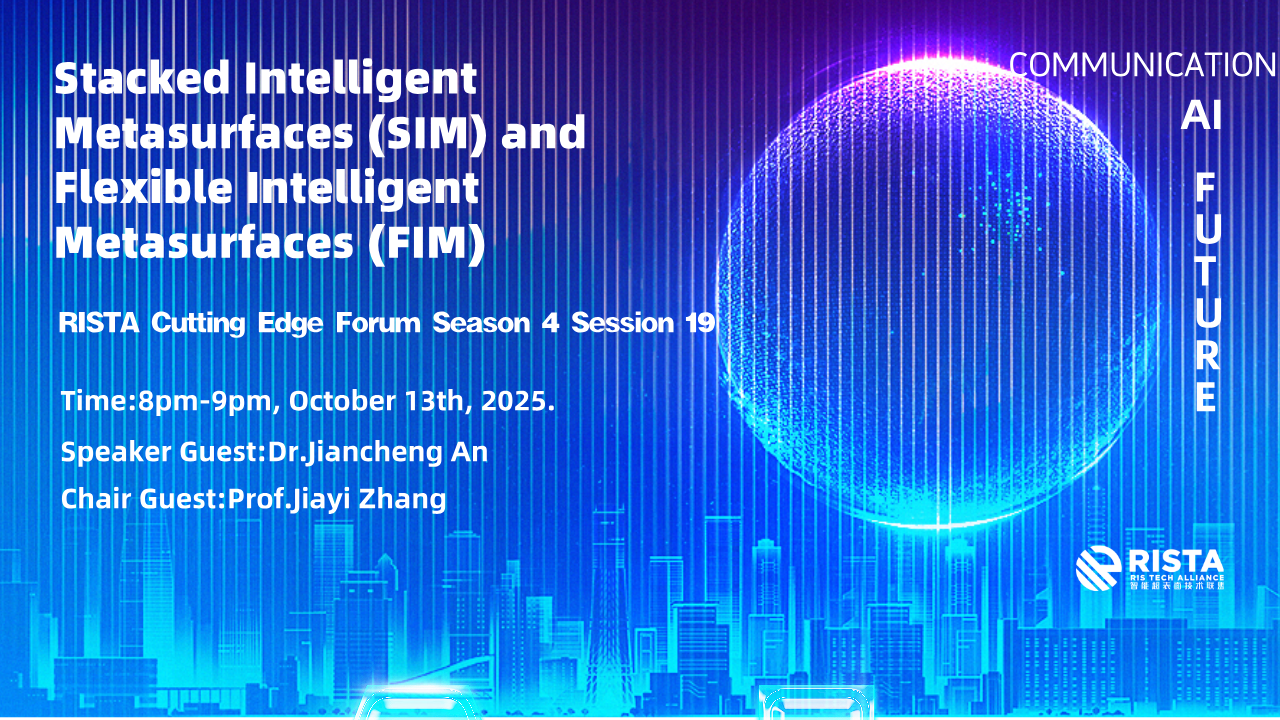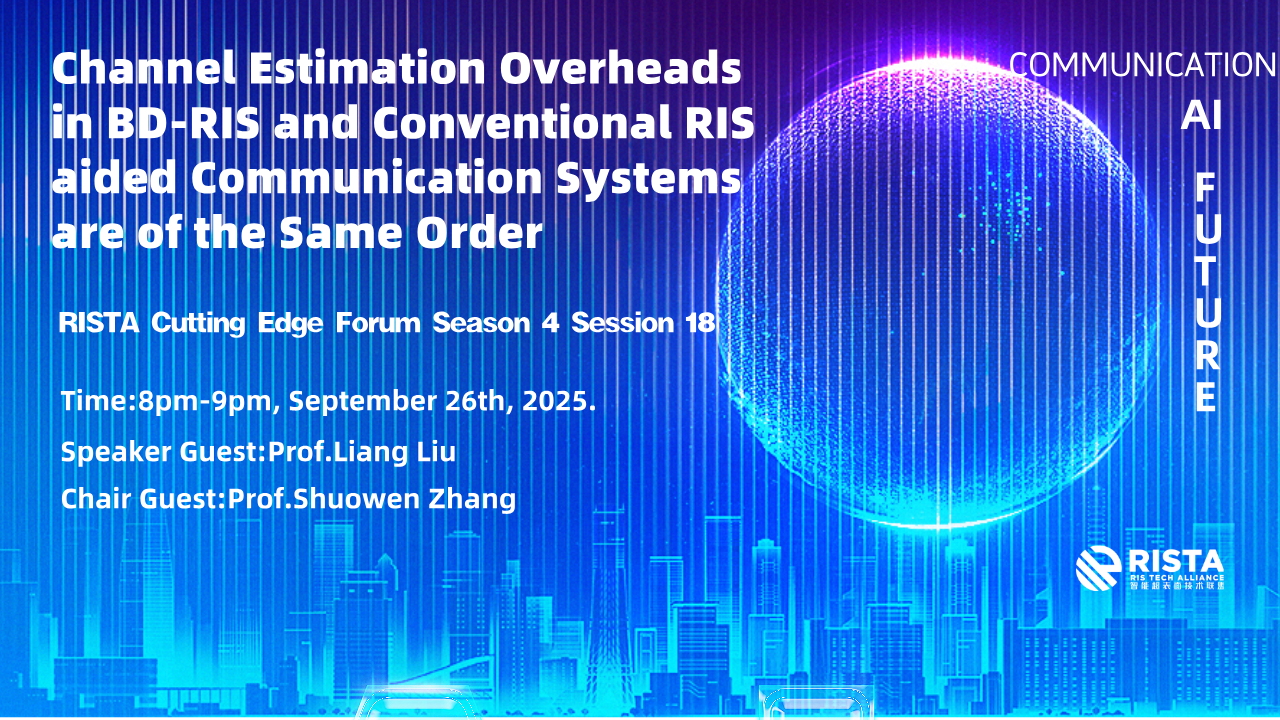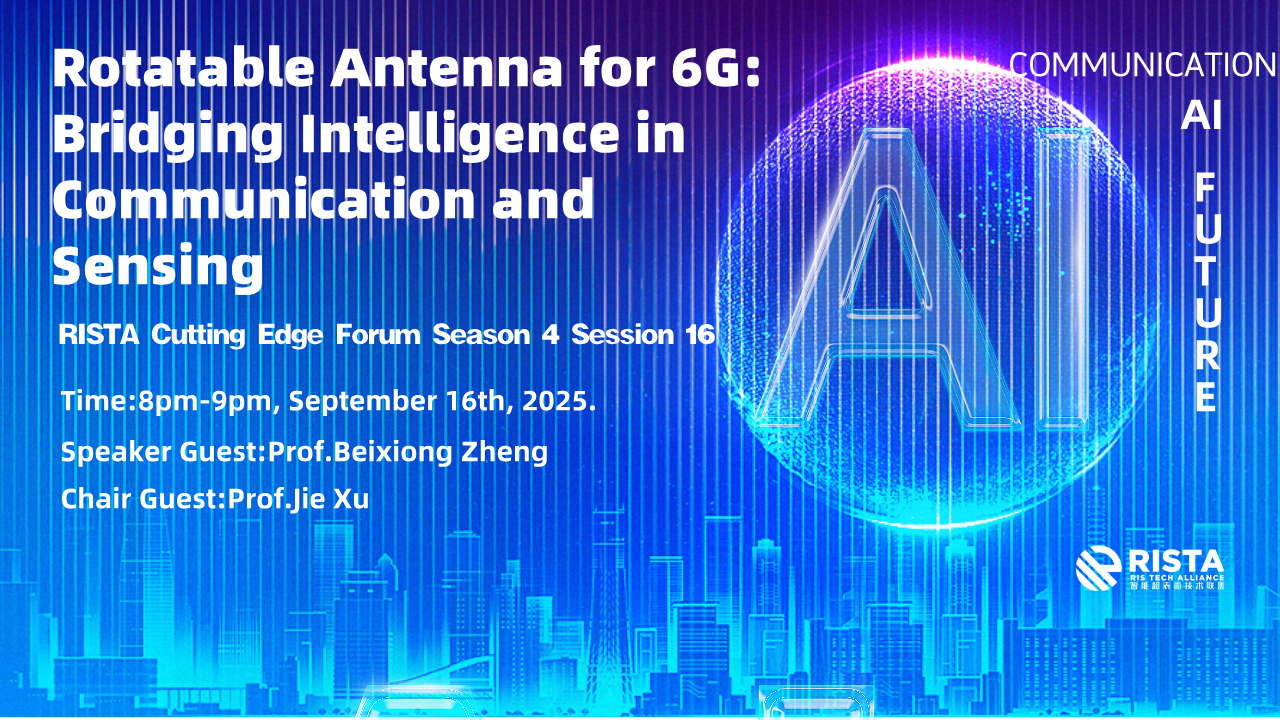
RIS CUTTING EDGE FOURM
Theories and methods of resource cognition and decision-making empowered by electromagnetic spectrum foundation model
电磁频谱大模型赋能资源认知决策理论与方法

Theories and methods of resource cognition and decision-making empowered by electromagnetic spectrum foundation model
- RISTA CUTTING EDGE FORUM Season 4 Session 5
- Time:10:00-11:00,June 28th,2025
- Speaker guest:Prof.Fuhui Zhou
- Chair guest:Prof.Xiaodong Liu

Fuhui Zhou, Professor and Ph.D. Supervisor, is a recipient of the National Science Fund for Excellent Young Scholars and serves as the Associate Director of the “111” National Science and Innovation Bases. He is also a Senior Member of IEEE. His research focuses on the theory and methods of intelligent spectrum management. To date, he has published over 300 papers in leading international journals and conferences in the field of communications, including 14 ESI Highly Cited and Hot Papers. He has received four Best Paper Awards from international conferences such as IEEE Globecom and IEEE/CIC ICCC. He is the author of four academic monographs and has filed over 50 invention patents, with more than 30 granted. He has contributed to five international standards and white papers. As a principal investigator or project leader, he has undertaken more than 20 national and provincial-level research projects, including the National Key R&D Program, Key Programs of the National Natural Science Foundation of China, and the Excellent Young Scientists Fund. He has been listed among Stanford University’s World's Top 2% Scientists, recognized as a Highly Cited Chinese Researcher by Elsevier, and received several honors, including the IEEE ComSoc Asia-Pacific Outstanding Young Researcher Award and the ITU Young Scientist Award. His work has earned him numerous prestigious awards, such as the First Prize of the Jiangxi Provincial Natural Science Award, the E&T Innovation Awards, the Gold Medal at the Geneva International Exhibition of Inventions, and the First Prize of the China Association of Inventions Innovation and Entrepreneurship Award. He currently serves on the editorial boards of several leading journals in the communications field, including IEEE Communications Magazine, IEEE Transactions on Communications (TCOM), IEEE Systems Journal, and IEEE Wireless Communications Letters (WCL).





